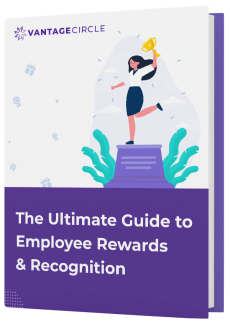How to Outsmart Unconscious Bias In Recruitment

What Is Unconscious Bias?
Unconscious biases are people's unintended preferences. They are formed by the socialization of our personal experiences and representations of different groups in the media. These experiences act as social filters in which we make assessments and judgments of people around us.
Unconscious biases are social stereotypes about certain groups of people that individuals form outside their conscious awareness.
Research tells us that human beings have natural tendencies to place individuals into social categories. These categories are often based on social cues such as gender, cultural background, age, height, or body size. We also categorize based on social location, religious identity, or political affiliation.
Types of Unconscious Biases
Affinity Bias
It refers to the tendency to be partial to people who are similar to us.
Perception Bias
Perception bias is when someone cannot make an objective judgment about a person because they belong to a group that they already have preconceived notions about.
The Halo Effect
When someone lets a trait positively influence their evaluation of other unrelated characteristics, it is called the Halo Effect.
Confirmation Bias
When people seek out information that confirms their preexisting beliefs, it is called Confirmation Bias.
Groupthink or Conformity
When people hold back their thoughts and opinions to fit in with a particular group, it is called Groupthink or Conformity.
The Relatable Experience
Recruiting managers always have the best intentions for hiring the best talents. But do they always succeed?
If you are a recruiting manager, you must have hired people based on their impeccable resumes. Still, to your surprise, they were not the best performers and often had a hard time meeting your company goals. And at the same time, the candidate you were skeptical about turned out to be a star performer.
There can be many reasons behind this, but one of the significant factors lies in our unconscious biases. It impacts talent management processes in decision-making. Often, recruiting managers hire people who look similar or share similar behavioral attributes.
Recommended Resource: A Complete Guide On Talent Management.
4 Steps to Tackle Unconscious Bias
1. Practice Blind Hiring:
Blind hiring is a recruitment tool for eliminating biases during recruitment. Here, the candidates' details, gender, cultural background, age, height, and ethnicity are blackout. They are selected based on their expertise, skills, and experiences.
This hiring practice not only helps an organization to eliminate unconscious biases but also helps in promoting diversity and inclusion in the workplace.
It is commonplace to see incompetent people working in a company who harms the organization more than they do good. Such hires are a result of the biases that arise from the traditional hiring method. A conventional hiring method encourages the hiring manager to prefer one candidate over others based on his belief system, personal liking, or social prejudice. With blind hiring, the organizations make sure they hire only the fittest person based on his skill set.
2. Understand Your Biases:
Understand your own biases. Even though you are a rational thinker and make conscious decisions while recruiting, you can fall into the unconscious loop. The unconscious brain uses associations based on social categories to develop biases. For example, if we are constantly exposed to women as primary school teachers and men as organizational leaders, these associations become wired within the human brain.
You need to be honest and aware of your own biases and have a systematic approach to find a solution. In a talk show Gail Tolstoi-Miller, the award-winning career coach and strategist, shared her experiences on unconscious bias in her 20 years long career. When she became aware of her preferences, she extensively researched unconscious bias, wrote down all her assumptions, judgments, and perceptions. She found that she doesn't like candidates wearing bright red polka dot dresses. She unconsciously put candidates in a no pile for wearing it. Just like her, it's essential to be self-aware and honestly take measures to prevent it.
3. Fight the First Impression:
Studies have proved that you form your first impression of a person in the first 100 milliseconds. This proves that even before you have conscious thoughts about a person you are meeting, you create your unconscious judgment. And the damage is done even before the blink of your eyes. Most of us are not even aware of it. Recruiting managers too fall under this trap and often make a decision that eventually impacts the organization.
So how do you outsmart something that you are not even conscious of? To tackle this problem, you have to constantly remind yourself that you are unaware of your first impression.
4. Define Your Inner Focus:
Once you become aware of your own bias, then you can reduce the bias by taking counteractions. For example, if you are gender-biased, you can counteract thinking about all the influential and successful women leaders. This practice will train your inner focus and gradually give you more excellent perspectives and redefine your assumptions and perceptions. And also, surround yourself with positive words and images about people you might have stereotypical thoughts about to eliminate your negative biases.
Wrapping Up
So when you are busy hiring new candidates or even sipping your favorite coffee, you can introspect on your own biases. Make sure you take immediate measures not to let unconscious bias influence your decision-making.
The more we expose ourselves to break our stereotypical thoughts and perceptions, we create room for less discrimination.

Vantage Circle is a simple AI-powered Rewards & Recognition Platform for upgrading your employee experience and engagement for better productivity.





